-
EXECUTIVE SUMMARY
-
1.1.
-
Market Attractiveness Analysis
-
Global Cloud
-
Workload Protection Market, By Component
-
Global Cloud
-
Workload Protection Market, By Deployment
-
Global Cloud
-
Workload Protection Market, By Organization Size
-
Global
-
Cloud Workload Protection Market, By Vertical
-
Cloud
-
Workload Protection Market, By Region
-
MARKET INTRODUCTION
-
Definition
-
Scope of the Study
-
Market Structure
-
RESEARCH METHODOLOGY
-
Research Process
-
Primary Research
-
Secondary Research
-
Market Size
-
Estimation
-
Forecast Model
-
List
-
of Assumptions
-
MARKET INSIGHTS
-
MARKET
-
DYNAMICS
-
Introduction
-
Drivers
- Need for security for enterprise cloud workloads
-
5.2.2.
-
Increasing adoption of the multi-cloud strategy among enterprises
-
5.2.3.
-
Drivers Impact Analysis
-
Restraints
-
5.3.1.
-
Multiple Regulatory Compliance Issues
-
Opportunities
- Growing Demand from SMEs
-
Challenges
- Limited Expertise
-
Technological
-
Trend
-
Regulatory Landscape / Standards
-
6.
-
MARKET FACTOR ANALYSIS
-
Supply/Value Chain Analysis
- R&D
- Manufacturing
- Distribution & Sales
- Post-Sales
-
Monitoring
-
Porter’s Five Forces Model
- Bargaining Power of Suppliers
- Bargaining Power of Buyers
- Threat
- Intensity of Rivalry
-
6.2.1.
-
Threat of New Entrants
-
of Substitutes
-
-
GLOBAL CLOUD WORKLOAD PROTECTION MARKET, BY COMPONENT
-
Overview
-
Solution
-
7.2.1.
-
Solution: Market Estimates & Forecast, by Region/Country, 2020-2027
-
Vulnerability Assessment
-
Vulnerability
-
Assessment: Market Estimates & Forecast, by Region/Country, 2020-2027
-
7.2.3.
-
Monitoring and Logging
-
Monitoring and Logging:
-
Market Estimates & Forecast, by Region/Country, 2020-2027
-
7.2.4.
-
Threat Detection and Incident Response
-
Threat
-
Detection and Incident Response: Market Estimates & Forecast, by Region/Country,
-
Others
-
Others:
-
Market Estimates & Forecast, by Region/Country, 2020-2027
-
7.3.
-
Service
-
by Region/Country, 2020-2027
-
by Region/Country, 2020-2027
-
and Integration
-
Service: Market Estimates & Forecast,
-
Support and Maintenance
-
Support and Maintenance: Market Estimates & Forecast,
-
Training, Consulting,
-
Training, Consulting, and Integration:
-
Market Estimates & Forecast, by Region/Country, 2020-2027
-
7.3.4.
-
Managed Services
-
Estimates & Forecast, by Region/Country, 2020-2027
-
8.
-
Managed Services: Market
-
GLOBAL CLOUD WORKLOAD PROTECTION MARKET, BY DEPLOYMENT
-
8.1.
-
Overview
-
Public Cloud
-
8.2.1.
-
Public Cloud: Market Estimates & Forecast, by Region/Country, 2020-2027
-
Private Cloud
- Private Cloud:
-
Market Estimates & Forecast, by Region/Country, 2020-2027
-
8.4.
-
Hybrid Cloud
-
& Forecast, by Region/Country, 2020-2027
-
Hybrid Cloud: Market Estimates
-
GLOBAL CLOUD
-
WORKLOAD PROTECTION MARKET, BY ORGANIZATION SIZE
-
Overview
-
Small & Medium Enterprise
- Small
-
& Medium Enterprise: Market Estimates & Forecast, by Region/Country, 2020-2027
-
Large Enterprise
- Large Enterprise:
-
Market Estimates & Forecast, by Region/Country, 2020-2027
-
10.
-
GLOBAL CLOUD WORKLOAD PROTECTION MARKET, BY VERTICAL
-
10.1.
-
Overview
-
IT and Telecommunications
-
10.2.1.
-
IT and Telecommunications: Market Estimates & Forecast, by Region/Country,
-
Banking, Financial Components, and Insurance
- Banking, Financial Components, and Insurance: Market
-
Estimates & Forecast, by Region/Country, 2020-2027
-
Government
- Government and Public Sector: Market
-
and Public Sector
-
Estimates & Forecast, by Region/Country, 2020-2027
-
Healthcare
- Healthcare and Life Sciences: Market
-
and Life Sciences
-
Estimates & Forecast, by Region/Country, 2020-2027
-
Energy
- Energy and Utilities: Market Estimates
-
and Utilities
-
& Forecast, by Region/Country, 2020-2027
-
Media
- Media and Entertainment: Market
-
and Entertainment
-
Estimates & Forecast, by Region/Country, 2020-2027
-
Retail
- Retail and Consumer Goods: Market
-
and Consumer Goods
-
Estimates & Forecast, by Region/Country, 2020-2027
-
Manufacturing
- Manufacturing: Market Estimates & Forecast, by Region/Country,
-
Others
- Others:
-
Market Estimates & Forecast, by Region/Country, 2020-2027
-
11.
-
GLOBAL CLOUD WORKLOAD PROTECTION MARKET, BY REGION
-
11.1.
-
Overview
-
North America
- Canada
- Mexico
-
11.2.1.
-
US
-
Europe
- Germany
- France
- Rest
-
11.3.2.
-
UK
-
of Europe
-
Asia Pacific
- China
- Japan
- India
-
11.4.4.
-
Rest of Asia-Pacific
-
Middle East & Africa
-
South America
-
COMPETITIVE LANDSCAPE
-
Competitive Overview
-
Competitor
-
Dashboard
-
Major Growth Strategy in the Global Cloud
-
Workload Protection Market
-
Competitive Benchmarking
-
Market Share Analysis
-
Enterprise
-
Data Management: The Leading Player in terms of Number of Developments in Global
-
Cloud Workload Protection Market
-
Key Developments &
- New Product Launch/Component Deployment
- Merger & Acquisition
- Joint
-
Growth Strategies
-
Ventures
-
COMPANY PROFILES
-
Trend
- Company Overview
- Products Offerings
- SWOT Analysis
-
Micro Incorporated
-
13.1.2.
-
Financial Overview
-
13.1.4.
-
Key Developments
-
13.1.6.
-
Key Strategies
-
McAfee, Inc.
- Financial Overview
- Key Developments
- Key Strategies
- Company Overview
- Products Offerings
- SWOT Analysis
-
13.2.1.
-
Company Overview
-
13.2.3.
-
Products Offerings
-
13.2.5.
-
SWOT Analysis
-
13.3.
-
Symantec Corporation
-
13.3.2.
-
Financial Overview
-
13.3.4.
-
Key Developments
-
13.3.6.
-
Key Strategies
-
Sophos Ltd.
- Financial Overview
- Key Developments
- Key Strategies
- Company Overview
- Products Offerings
- SWOT Analysis
-
13.4.1.
-
Company Overview
-
13.4.3.
-
Products Offerings
-
13.4.5.
-
SWOT Analysis
-
13.5.
-
Guardicore
-
13.5.2.
-
Financial Overview
-
13.5.4.
-
Key Developments
-
13.5.6.
-
Key Strategies
-
CLOUDPASSAGE
- Financial Overview
- Key Developments
- Key Strategies
- Company Overview
- Products Offerings
- SWOT Analysis
-
13.6.1.
-
Company Overview
-
13.6.3.
-
Products Offerings
-
13.6.5.
-
SWOT Analysis
-
13.7.
-
DOME9 SECURITY INC.
-
13.7.2.
-
Financial Overview
-
13.7.4.
-
Key Developments
-
13.7.6.
-
Key Strategies
-
HYTRUST, INC.
- Financial Overview
- Key Developments
- Key Strategies
- Company Overview
- Products Offerings
- SWOT Analysis
-
13.8.1.
-
Company Overview
-
13.8.3.
-
Products Offerings
-
13.8.5.
-
SWOT Analysis
-
13.9.
-
LogRhythm, Inc.
-
13.9.2.
-
Financial Overview
-
13.9.4.
-
Key Developments
-
13.9.6.
-
Key Strategies
-
Tripwire
- Financial Overview
- Key Developments
- Key Strategies
- Company Overview
- Products Offerings
- SWOT Analysis
-
13.10.1.
-
Company Overview
-
13.10.3.
-
Products Offerings
-
13.10.5.
-
SWOT Analysis
-
13.11.
-
Kaspersky
-
13.11.2.
-
Financial Overview
-
13.11.4.
-
Key Developments
-
13.11.6.
-
Key Strategies
-
Google
- Financial Overview
- Key Developments
- Key Strategies
- Company Overview
- Products Offerings
- SWOT Analysis
-
13.12.1.
-
Company Overview
-
13.12.3.
-
Products Offerings
-
13.12.5.
-
SWOT Analysis
-
13.13.
-
Qualys, Inc.
-
13.13.2.
-
Financial Overview
-
13.13.4.
-
Key Developments
-
13.13.6.
-
Key Strategies
-
Nutanix
- Financial Overview
- Key Developments
- Key Strategies
- Company Overview
- Products Offerings
- SWOT Analysis
-
13.14.1.
-
Company Overview
-
13.14.3.
-
Products Offerings
-
13.14.5.
-
SWOT Analysis
-
13.15.
-
Akamai Technologies
-
13.15.2.
-
Financial Overview
-
13.15.4.
-
Key Developments
-
13.15.6.
-
Key Strategies
-
APPENDIX
-
14.1.
-
References
-
Related Reports
-
14.3.
-
List of Abbreviation
-
-
List of Tables
-
TABLE 1
-
LIST OF ASSUMPTIONS
-
GLOBAL CLOUD WORKLOAD PROTECTION
-
MARKET, BY COMPONENT, 2020–2027 (USD MILLION)
-
GLOBAL
-
CLOUD WORKLOAD PROTECTION MARKET, BY DEPLOYMENT, 2020–2027 (USD MILLION)
-
GLOBAL CLOUD WORKLOAD PROTECTION MARKET, BY ORGANIZATION
-
SIZE, 2020–2027 (USD MILLION)
-
GLOBAL CLOUD
-
WORKLOAD PROTECTION MARKET, BY VERTICAL, 2020–2027 (USD MILLION)
-
TABLE
-
GLOBAL CLOUD WORKLOAD PROTECTION MARKET, BY REGION, 2020–2027
-
(USD MILLION)
-
NORTH AMERICA: CLOUD WORKLOAD PROTECTION
-
MARKET, BY COUNTRY, 2020–2027 (USD MILLION)
-
NORTH
-
AMERICA: CLOUD WORKLOAD PROTECTION MARKET, BY COMPONENT, 2020–2027 (USD MILLION)
-
NORTH AMERICA: CLOUD WORKLOAD PROTECTION MARKET, BY
-
DEPLOYMENT, 2020–2027 (USD MILLION)
-
NORTH
-
AMERICA: CLOUD WORKLOAD PROTECTION MARKET, BY ORGANIZATION SIZE, 2020–2027
-
(USD MILLION)
-
NORTH AMERICA: CLOUD WORKLOAD PROTECTION
-
MARKET, BY VERTICAL, 2020–2027 (USD MILLION)
-
US:
-
CLOUD WORKLOAD PROTECTION MARKET, BY COMPONENT, 2020–2027 (USD MILLION)
-
US: CLOUD WORKLOAD PROTECTION MARKET, BY DEPLOYMENT,
-
US: CLOUD WORKLOAD
-
PROTECTION MARKET, BY ORGANIZATION SIZE, 2020–2027 (USD MILLION)
-
TABLE
-
US: CLOUD WORKLOAD PROTECTION MARKET, BY VERTICAL, 2020–2027
-
(USD MILLION)
-
CANADA: CLOUD WORKLOAD PROTECTION
-
MARKET, BY COMPONENT, 2020–2027 (USD MILLION)
-
CANADA:
-
CLOUD WORKLOAD PROTECTION MARKET, BY DEPLOYMENT, 2020–2027 (USD MILLION)
-
CANADA: CLOUD WORKLOAD PROTECTION MARKET, BY ORGANIZATION
-
SIZE, 2020–2027 (USD MILLION)
-
CANADA: CLOUD
-
WORKLOAD PROTECTION MARKET, BY INDCANADATRY VERTICAL, 2020–2027 (USD MILLION)
-
MEXICO: CLOUD WORKLOAD PROTECTION MARKET, BY COMPONENT,
-
MEXICO: CLOUD WORKLOAD
-
PROTECTION MARKET, BY DEPLOYMENT, 2020–2027 (USD MILLION)
-
TABLE 26
-
MEXICO: CLOUD WORKLOAD PROTECTION MARKET, BY ORGANIZATION SIZE, 2020–2027
-
(USD MILLION)
-
MEXICO: CLOUD WORKLOAD PROTECTION
-
MARKET, BY VERTICAL, 2020–2027 (USD MILLION)
-
EUROPE:
-
CLOUD WORKLOAD PROTECTION MARKET, BY COUNTRY, 2020–2027 (USD MILLION)
-
TABLE
-
EUROPE: CLOUD WORKLOAD PROTECTION MARKET, BY COMPONENT, 2020–2027
-
(USD MILLION)
-
EUROPE: CLOUD WORKLOAD PROTECTION
-
MARKET, BY DEPLOYMENT, 2020–2027 (USD MILLION)
-
EUROPE:
-
CLOUD WORKLOAD PROTECTION MARKET, BY ORGANIZATION SIZE, 2020–2027 (USD MILLION)
-
EUROPE: CLOUD WORKLOAD PROTECTION MARKET, BY VERTICAL,
-
UK: CLOUD WORKLOAD
-
PROTECTION MARKET, BY COMPONENT, 2020–2027 (USD MILLION)
-
TABLE 36
-
UK: CLOUD WORKLOAD PROTECTION MARKET, BY DEPLOYMENT, 2020–2027 (USD
-
MILLION)
-
UK: CLOUD WORKLOAD PROTECTION MARKET, BY
-
ORGANIZATION SIZE, 2020–2027 (USD MILLION)
-
UK:
-
CLOUD WORKLOAD PROTECTION MARKET, BY VERTICAL, 2020–2027 (USD MILLION)
-
GERMANY: CLOUD WORKLOAD PROTECTION MARKET, BY COMPONENT,
-
GERMANY: CLOUD WORKLOAD
-
PROTECTION MARKET, BY DEPLOYMENT, 2020–2027 (USD MILLION)
-
TABLE 42
-
GERMANY: CLOUD WORKLOAD PROTECTION MARKET, BY ORGANIZATION SIZE, 2020–2027
-
(USD MILLION)
-
GERMANY: CLOUD WORKLOAD PROTECTION
-
MARKET, BY VERTICAL, 2020–2027 (USD MILLION)
-
FRANCE:
-
CLOUD WORKLOAD PROTECTION MARKET, BY COMPONENT, 2020–2027 (USD MILLION)
-
FRANCE: CLOUD WORKLOAD PROTECTION MARKET, BY DEPLOYMENT,
-
FRANCE: CLOUD WORKLOAD
-
PROTECTION MARKET, BY ORGANIZATION SIZE, 2020–2027 (USD MILLION)
-
TABLE
-
FRANCE: CLOUD WORKLOAD PROTECTION MARKET, BY VERTICAL, 2020–2027
-
(USD MILLION)
-
REST OF EUROPE: CLOUD WORKLOAD PROTECTION
-
MARKET, BY COMPONENT, 2020–2027 (USD MILLION)
-
REST
-
OF EUROPE: CLOUD WORKLOAD PROTECTION MARKET, BY DEPLOYMENT, 2020–2027 (USD
-
MILLION)
-
REST OF EUROPE: CLOUD WORKLOAD PROTECTION
-
MARKET, BY ORGANIZATION SIZE, 2020–2027 (USD MILLION)
-
TABLE 54
-
REST OF EUROPE: CLOUD WORKLOAD PROTECTION MARKET, BY VERTICAL, 2020–2027
-
(USD MILLION)
-
ASIA-PACIFIC: CLOUD WORKLOAD PROTECTION
-
MARKET, BY COUNTRY, 2020–2027 (USD MILLION)
-
ASIA-PACIFIC:
-
CLOUD WORKLOAD PROTECTION MARKET, BY COMPONENT, 2020–2027 (USD MILLION)
-
ASIA-PACIFIC: CLOUD WORKLOAD PROTECTION MARKET, BY
-
DEPLOYMENT, 2020–2027 (USD MILLION)
-
ASIA-PACIFIC:
-
CLOUD WORKLOAD PROTECTION MARKET, BY ORGANIZATION SIZE, 2020–2027 (USD MILLION)
-
ASIA-PACIFIC: CLOUD WORKLOAD PROTECTION MARKET, BY
-
VERTICAL, 2020–2027 (USD MILLION)
-
CHINA: CLOUD
-
WORKLOAD PROTECTION MARKET, BY COMPONENT, 2020–2027 (USD MILLION)
-
TABLE
-
CHINA: CLOUD WORKLOAD PROTECTION MARKET, BY DEPLOYMENT, 2020–2027
-
(USD MILLION)
-
CHINA: CLOUD WORKLOAD PROTECTION MARKET,
-
BY ORGANIZATION SIZE, 2020–2027 (USD MILLION)
-
CHINA:
-
CLOUD WORKLOAD PROTECTION MARKET, BY VERTICAL, 2020–2027 (USD MILLION)
-
INDIA: CLOUD WORKLOAD PROTECTION MARKET, BY COMPONENT,
-
INDIA: CLOUD WORKLOAD
-
PROTECTION MARKET, BY DEPLOYMENT, 2020–2027 (USD MILLION)
-
TABLE 68
-
INDIA: CLOUD WORKLOAD PROTECTION MARKET, BY ORGANIZATION SIZE, 2020–2027
-
(USD MILLION)
-
INDIA: CLOUD WORKLOAD PROTECTION MARKET,
-
BY VERTICAL, 2020–2027 (USD MILLION)
-
JAPAN:
-
CLOUD WORKLOAD PROTECTION MARKET, BY COMPONENT, 2020–2027 (USD MILLION)
-
JAPAN: CLOUD WORKLOAD PROTECTION MARKET, BY DEPLOYMENT,
-
JAPAN: CLOUD WORKLOAD
-
PROTECTION MARKET, BY ORGANIZATION SIZE, 2020–2027 (USD MILLION)
-
TABLE
-
JAPAN: CLOUD WORKLOAD PROTECTION MARKET, BY VERTICAL, 2020–2027
-
(USD MILLION)
-
REST OF ASIA-PACIFIC: CLOUD WORKLOAD
-
PROTECTION MARKET, BY COMPONENT, 2020–2027 (USD MILLION)
-
TABLE 77
-
REST OF ASIA-PACIFIC: CLOUD WORKLOAD PROTECTION MARKET, BY DEPLOYMENT, 2020–2027
-
(USD MILLION)
-
REST OF ASIA-PACIFIC: CLOUD WORKLOAD
-
PROTECTION MARKET, BY ORGANIZATION SIZE, 2020–2027 (USD MILLION)
-
TABLE
-
REST OF ASIA-PACIFIC: CLOUD WORKLOAD PROTECTION MARKET, BY
-
VERTICAL, 2020–2027 (USD MILLION)
-
MIDDLE EAST
-
AND AFRICA: CLOUD WORKLOAD PROTECTION MARKET, BY COMPONENT, 2020–2027 (USD
-
MILLION)
-
MIDDLE EAST AND AFRICA: CLOUD WORKLOAD
-
PROTECTION MARKET, BY DEPLOYMENT, 2020–2027 (USD MILLION)
-
TABLE 83
-
MIDDLE EAST AND AFRICA: CLOUD WORKLOAD PROTECTION MARKET, BY ORGANIZATION
-
SIZE, 2020–2027 (USD MILLION)
-
MIDDLE EAST
-
AND AFRICA: CLOUD WORKLOAD PROTECTION MARKET, BY VERTICAL, 2020–2027 (USD
-
MILLION)
-
SOUTH AMERICA: CLOUD WORKLOAD PROTECTION
-
MARKET, BY COMPONENT, 2020–2027 (USD MILLION)
-
SOUTH
-
AMERICA: CLOUD WORKLOAD PROTECTION MARKET, BY DEPLOYMENT, 2020–2027 (USD MILLION)
-
SOUTH AMERICA: CLOUD WORKLOAD PROTECTION MARKET, BY
-
ORGANIZATION SIZE, 2020–2027 (USD MILLION)
-
SOUTH
-
AMERICA: CLOUD WORKLOAD PROTECTION MARKET, BY VERTICAL, 2020–2027 (USD MILLION)
-
-
-
List of Figures
-
MARKET
-
SYNOPSIS
-
RESEARCH PROCESS OF MRFR
-
FIGURE 3
-
TOP DOWN & BOTTOM-UP APPROACH
-
GLOBAL CLOUD
-
WORKLOAD PROTECTION MARKET, BY COMPONENT, 2020–2027 (USD MILLION)
-
FIGURE
-
GLOBAL CLOUD WORKLOAD PROTECTION MARKET, BY DEPLOYMENT, 2020–2027
-
(USD MILLION)
-
GLOBAL CLOUD WORKLOAD PROTECTION MARKET,
-
BY ORGANIZATION SIZE, 2020–2027 (USD MILLION)
-
GLOBAL
-
CLOUD WORKLOAD PROTECTION MARKET, BY VERTICAL, 2020–2027 (USD MILLION)
-
GLOBAL CLOUD WORKLOAD PROTECTION MARKET, BY REGION,
-
GLOBAL CLOUD WORKLOAD
-
PROTECTION MARKET, BY REGION, 2020–2027 (USD MILLION)
-
FIGURE 11
-
NORTH AMERICA: CLOUD WORKLOAD PROTECTION MARKET, BY COUNTRY, 2020–2027
-
(USD MILLION)
-
NORTH AMERICA: CLOUD WORKLOAD PROTECTION
-
MARKET, BY COMPONENT, 2020–2027 (USD MILLION)
-
NORTH
-
AMERICA: CLOUD WORKLOAD PROTECTION MARKET, BY DEPLOYMENT, 2020–2027 (USD MILLION)
-
NORTH AMERICA: CLOUD WORKLOAD PROTECTION MARKET, BY
-
ORGANIZATION SIZE, 2020–2027 (USD MILLION)
-
NORTH
-
AMERICA: CLOUD WORKLOAD PROTECTION MARKET, BY VERTICAL, 2020–2027 (USD MILLION)
-
EUROPE: CLOUD WORKLOAD PROTECTION MARKET, BY COUNTRY,
-
EUROPE: CLOUD WORKLOAD
-
PROTECTION MARKET, BY COMPONENT, 2020–2027 (USD MILLION)
-
FIGURE 19
-
EUROPE: CLOUD WORKLOAD PROTECTION MARKET, BY DEPLOYMENT, 2020–2027 (USD
-
MILLION)
-
EUROPE: CLOUD WORKLOAD PROTECTION MARKET,
-
BY ORGANIZATION SIZE, 2020–2027 (USD MILLION)
-
EUROPE:
-
CLOUD WORKLOAD PROTECTION MARKET, BY VERTICAL, 2020–2027 (USD MILLION)
-
ASIA-PACIFIC: CLOUD WORKLOAD PROTECTION MARKET, BY
-
COUNTRY, 2020–2027 (USD MILLION)
-
ASIA-PACIFIC:
-
CLOUD WORKLOAD PROTECTION MARKET, BY COMPONENT, 2020–2027 (USD MILLION)
-
ASIA-PACIFIC: CLOUD WORKLOAD PROTECTION MARKET, BY
-
DEPLOYMENT, 2020–2027 (USD MILLION)
-
ASIA-PACIFIC:
-
CLOUD WORKLOAD PROTECTION MARKET, BY ORGANIZATION SIZE, 2020–2027 (USD MILLION)
-
ASIA-PACIFIC: CLOUD WORKLOAD PROTECTION MARKET, BY
-
VERTICAL, 2020–2027 (USD MILLION)
-
MIDDLE
-
EAST & AFRICA: CLOUD WORKLOAD PROTECTION MARKET, BY COMPONENT, 2020–2027
-
(USD MILLION)
-
MIDDLE EAST & AFRICA: CLOUD WORKLOAD
-
PROTECTION MARKET, BY DEPLOYMENT, 2020–2027 (USD MILLION)
-
FIGURE 31
-
MIDDLE EAST & AFRICA: CLOUD WORKLOAD PROTECTION MARKET, BY ORGANIZATION
-
SIZE, 2020–2027 (USD MILLION)
-
MIDDLE EAST
-
& AFRICA: CLOUD WORKLOAD PROTECTION MARKET, BY VERTICAL, 2020–2027 (USD
-
MILLION)
-
SOUTH AMERICA: CLOUD WORKLOAD PROTECTION
-
MARKET, BY COMPONENT, 2020–2027 (USD MILLION)
-
SOUTH
-
AMERICA: CLOUD WORKLOAD PROTECTION MARKET, BY DEPLOYMENT, 2020–2027 (USD MILLION)
-
SOUTH AMERICA: CLOUD WORKLOAD PROTECTION MARKET, BY
-
ORGANIZATION SIZE, 2020–2027 (USD MILLION)
-
SOUTH
-
AMERICA: CLOUD WORKLOAD PROTECTION MARKET, BY VERTICAL, 2020–2027 (USD MILLION)


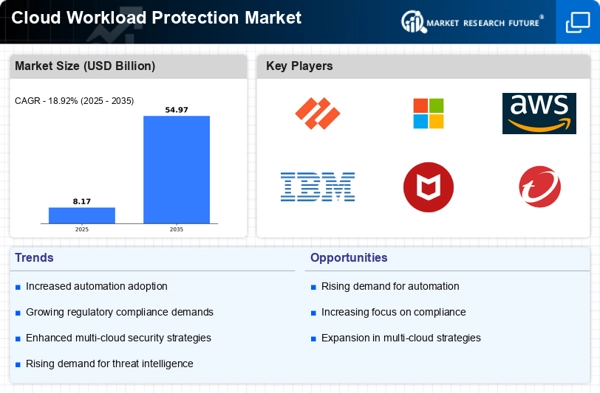
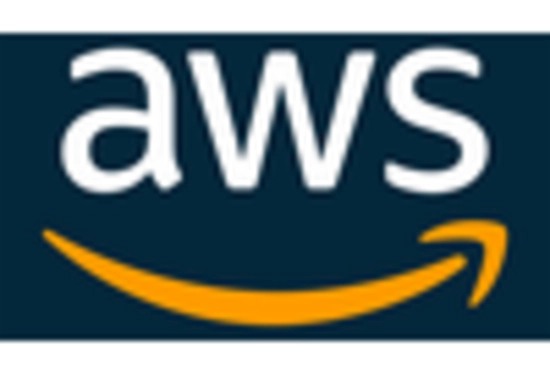

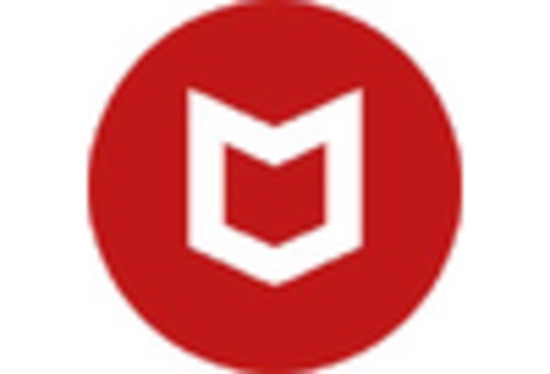

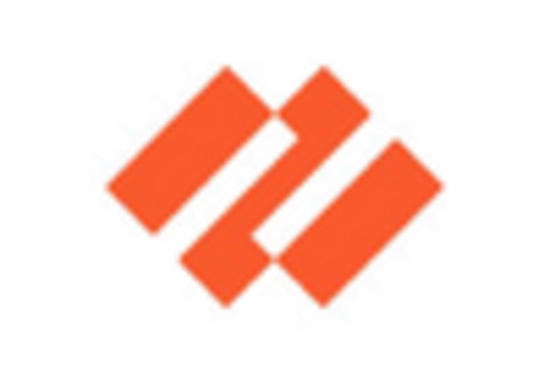
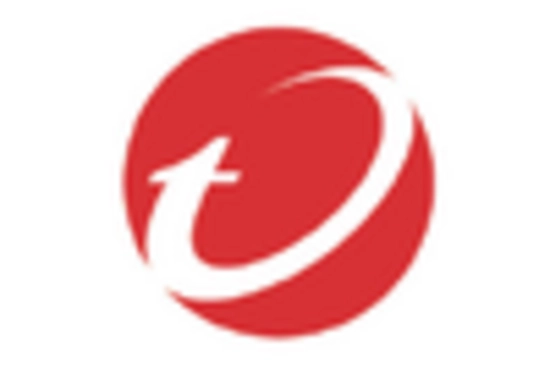

Leave a Comment